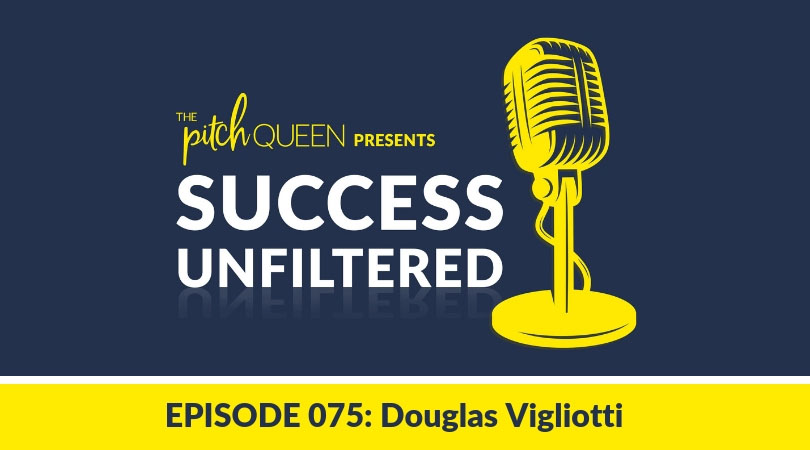
Do you have client boundaries in place? How good are you at saying NO to the customers that ask to work with you, but aren’t your ideal client?
When you first start your business, you want to start working with anyone that comes your way. You’re looking to build up your client base and you want to prove that you are capable of the work that people are asking of you.
Pretty soon, you find yourself working with clients that are less than ideal and that are eating up your time with tasks that you absolutely HATE doing.
The last thing you want to do is resent your clients, or feel like your clients are taking advantage of you, so it’s time to discuss how you can set up client boundaries and ground rules around who you want to work with.
First things first, have you ever given any thought to what type of clients you want to offer your services to? Who is it that you want to invest your time in?
Time is our most finite resource. You have to be able to spend your time wisely and in a way that makes you feel happy and satisfied with your work. Realizing that not all situations or clients are made equal. By only working with those clients that truly light you up, you can actually improve the trust with potential customers.
This means you’re saying NO to those individuals who aren’t in your niche or an ideal client.
Is that thought tough to swallow? I understand. I’ve been there, but I believe that this tactic, sales prevention, is important. You are preventing bad sales from happening, to create opportunities for better sales.
I want to share something that happened to me recently. I do some consulting work on the side, mainly because I love helping people with the sales aspect of their businesses.
I was talking to a woman the other day and she was telling me about how she just spent $5K on a new dog, but that she was struggling to come up with the investment money to work with the business coach I was helping.
In my mind, I’m thinking about the boundaries this coach had put into place to ensure she only works with her ideal clients.
I knew we could help this woman, in fact, we really WANTED to help her and coach her into building a thriving business, but she wasn’t a good fit for me.
She had a struggled with fear and a lack of confidence that was holding her hostage from pursuing bigger things in her business. And, unfortunately, if your fear is much greater than the risk you’re willing to take, you’re going to get stuck.
She’s not going to be able to help the people that she wants to truly help because she is struggling to overcome her own fears.
In order to really build and grow her successful dream business, she will need to re-examine her priorities, between spending $5K on a dog, or $5K on coaching which will help take her business further.
At the end of the day, I had to let her know she wasn’t going to be a good fit. I do hope that she comes around one day!
Sure we could have kept pursuing her, but I knew from her reactions to the cost that she wasn’t worth our time.
If we hadn’t decided on who our ideal client was and set up solid client boundaries, we may have taken her on and then later resented her for it.
A Strategic Approach to Business
A guest on Success Unfiltered, Douglas Vigliotti, is a firm believer in setting ground rules with clients. In his own business, he sets things up strategically and tactically, so that he knows who is the right fit for him and who he should turn away.
He shared that it’s something he thinks we should all implement into our businesses.
When we’re able to set these ground rules early, it allows us to flip the script — allowing US to say NO to potential client who just isn’t a good fit for you.
Setting these rules in place as soon as you get started in business will help you to avoid experiencing that tension and annoyance of taking on those “tough to work with” clients that never seem to go away.
Those clients are bad for you in business, and they’re bad for your mental state, too.
Rather than working with the less than ideal clients, begin thinking about how you can take a more strategic approach to business.
It’s important to have a strategy in place, so that you can avoid using tactics that are short-term when you want to build a business that is long-term.
It’s Not About the Questions You Ask Other People
Considering I often say that the best salespeople in the world are the best question askers, it just might surprise you.
However, when it comes to thinking about what long-term goals you have for your company, it isn’t about the questions you ask others, it’s all about the questions you ask YOURSELF!
If you’re asking yourself the wrong questions, then you’ll never get to the right answers. Meaning you’ll continue to take on the wrong clients – which is exactly what we want to avoid!
Doug shared his personal, strategic approach to selling and it involves clearly defining your long-term strategy, because then it makes it easier to say NO to a less than ideal client.
When you are able to activate these techniques and tactics, like sales prevention, you know you’re in it for the long run.
It makes it simpler for you to turn away those customers that weren’t a good fit at the time, or you didn’t have the right product or service.
When you go back to them, down the road, and let them know that you’re offering a new service, or you’ve created a new product, they’re more likely to do business with you. They know that they can trust you, because you didn’t just take their business on before you were actually ready for it.
It all starts with that long-term approach.
In Conclusion
Once you’ve taken the time to create your client boundaries, you have to stick to them. When you stick to them, you are able to help and serve the right clients at the right time. You’ll begin making a difference in their lives and in your own.
Do you and your business have client boundaries set up, yet? I’d love to hear about them in the comments below!










